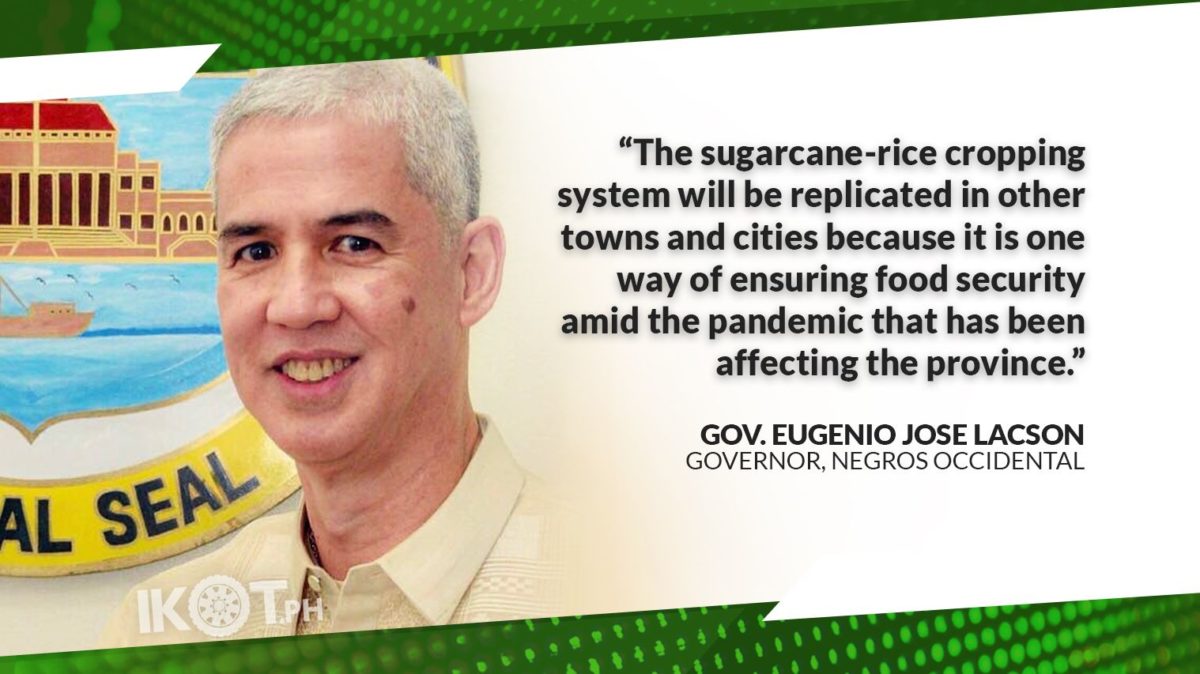The sugarcane-rice cropping system (SRCS) project of the Negros Occidental provincial government has reaped its first harvest in the pilot site located in Barangay Aranda, Hinigaran town.
Palay planted alongside sugarcane in the block farm of Hacienda Bagacay Workers CARPer Beneficiaries Association were harvested recently three months after these were planted in June, during the launching of the project with the Sugar Regulatory Administration (SRA).
“Our first SRA-assisted sugarcane block farmers have harvested rice from their sugarcane-rice cropping system,” Provincial Agriculturist Japhet Masculino said after joining Governor Eugenio Jose Lacson in the site visit the day before.
Lacson lauded the farmers for their cooperation which led to the success of the program.
“It will be replicated in other towns and cities because it is one way of ensuring food security amid the pandemic that has been affecting the province,” the mayor added.
Masculino said the two-hectare pilot site is being expanded by the farmers to intercrop more sugarcane and rice.
“The cooperative manager said the program is a big help for them since they not only produce sugarcane, they have rice as well,” he added.
“Through intercropping, the province aims to boost rice production as a strategy for rice self-sufficiency.”
Masculino said that through intercropping, the province aims to boost rice production as a strategy for rice self-sufficiency.
Aside from Hinigaran, other sugarcane-rice cropping areas, mostly block farms, are located in cities of Kabankalan, Himamaylan, La Carlota, Bago, Talisay and Cadiz, and Murcia town.
At least 20 hectares of the sugarcane farms in Negros Occidental have been identified for intercropping with rice.
At least 20 hectares of the sugarcane farms in Negros Occidental have been identified for intercropping with rice.
Masculino said that most of these intercropped areas are up for harvest this year and many other local small farmers have also expressed interest in joining the program after the milling season started this month.
“If we can utilize all these areas, this would mean an additional rice production for the province,” he said.
Masculino noted that if 10 sacks of palay can be produced per hectare, it would already translate to additional 1.9 million bags of palay or about 900,000 bags of rice.

